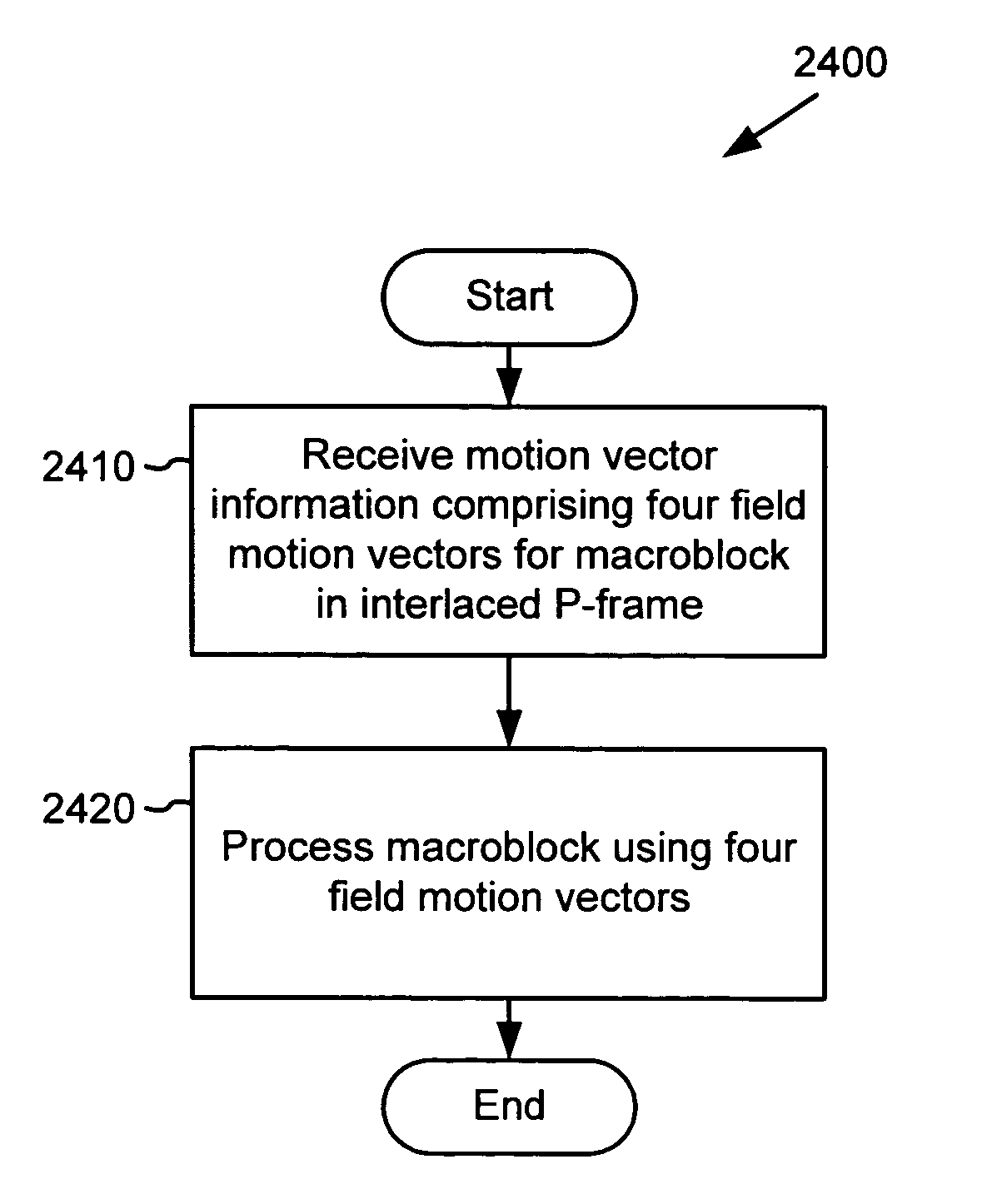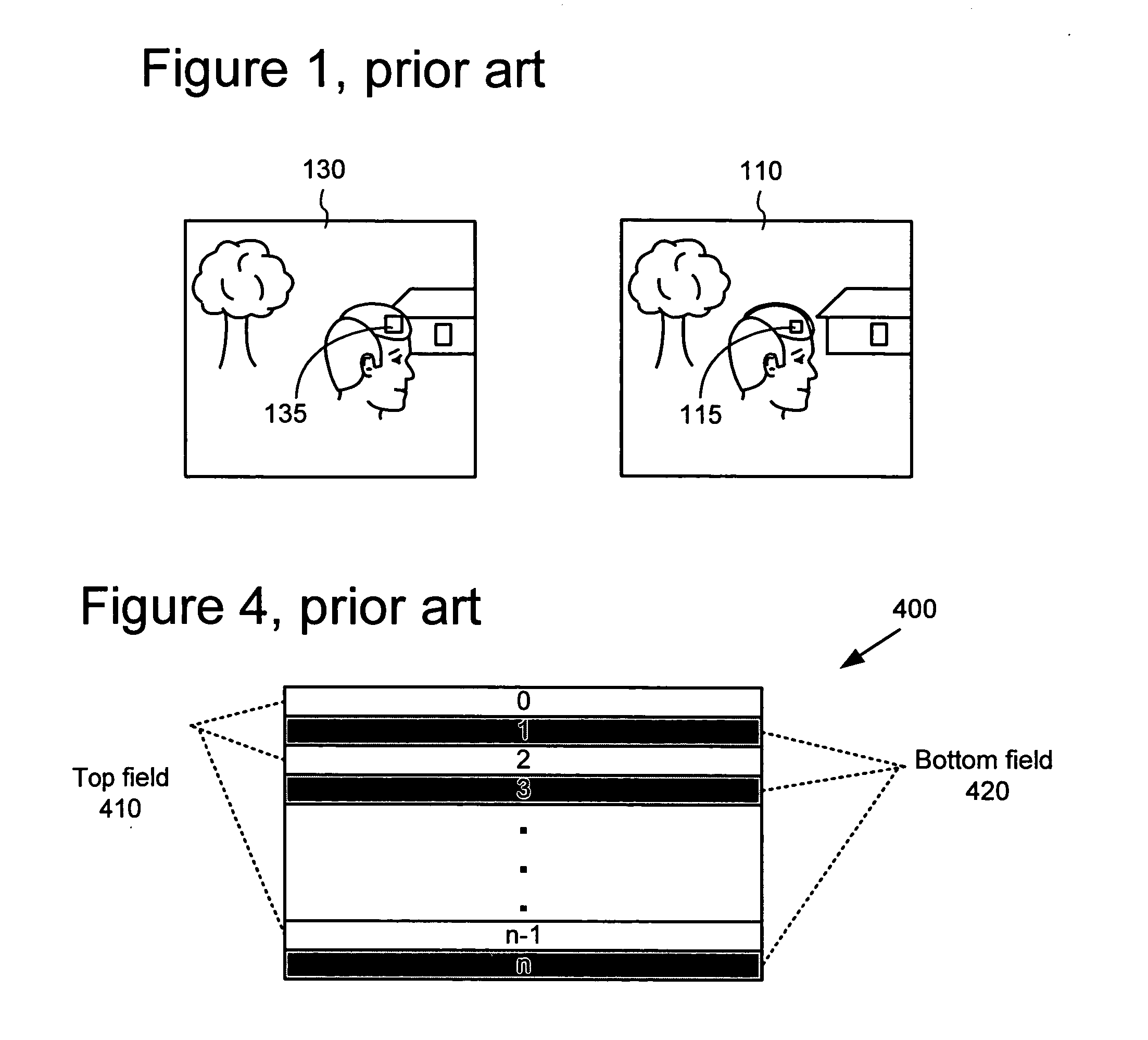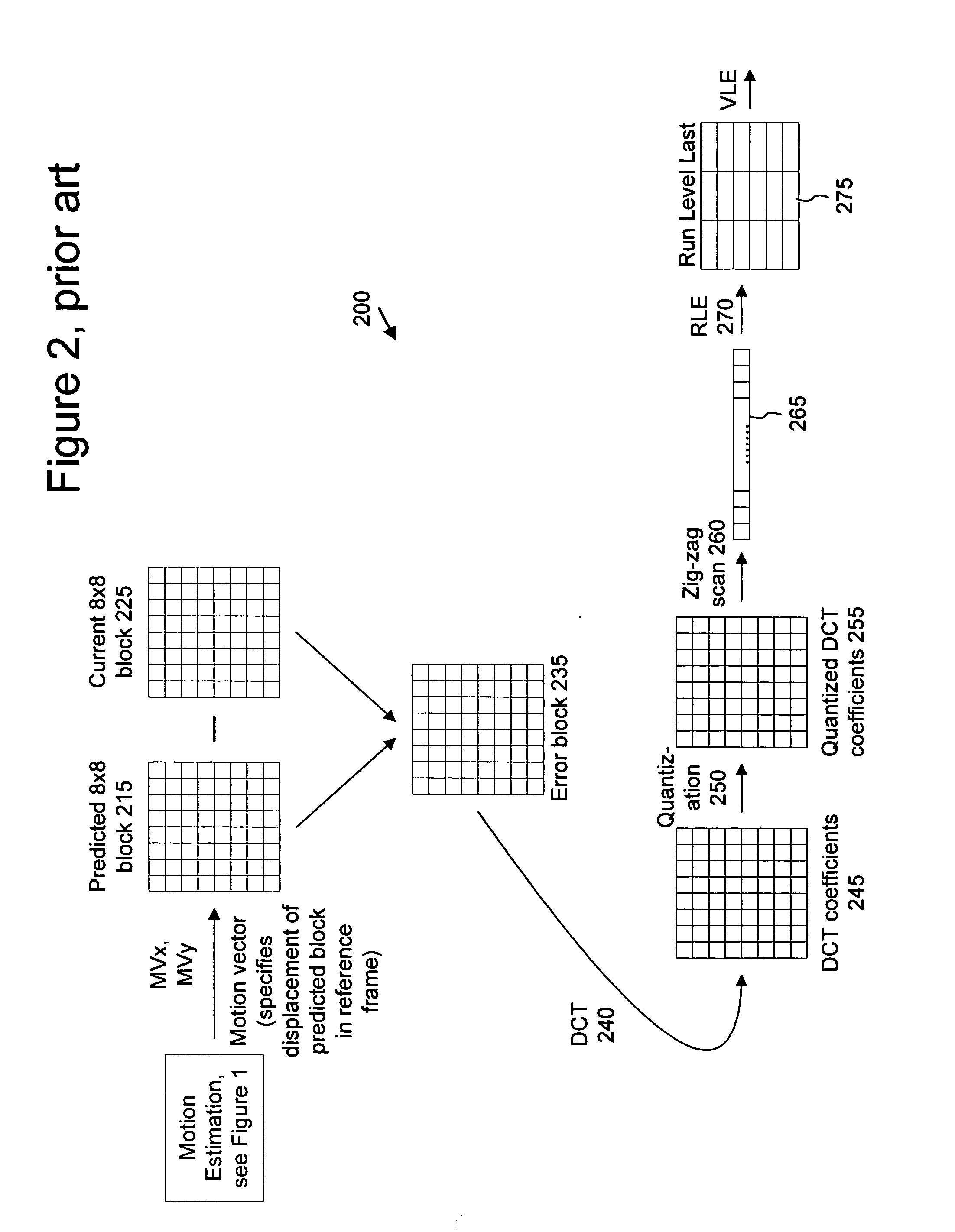Motion vector coding and decoding in interlaced frame coded pictures
a technology of interlaced frame coded pictures and motion vectors, applied in the field of interlaced video coding and decoding, can solve the problems of large storage and transmission capacity of digital video, lossless compression, and most computers and computer networks lack the resources to process raw digital video, so as to reduce temporal redundancy, reduce entropy, and reduce the effect of ra
- Summary
- Abstract
- Description
- Claims
- Application Information
AI Technical Summary
Benefits of technology
Problems solved by technology
Method used
Image
Examples
Embodiment Construction
The present application relates to techniques and tools for efficient compression and decompression of interlaced video. In various described embodiments, a video encoder and decoder incorporate techniques for encoding and decoding interlaced video, and corresponding signaling techniques for use with a bit stream format or syntax comprising different layers or levels (e.g., sequence level, frame level, field level, macroblock level, and / or block level).
Various alternatives to the implementations described herein are possible. For example, techniques described with reference to flowchart diagrams can be altered by changing the ordering of stages shown in the flowcharts, by repeating or omitting certain stages, etc. As another example, although some implementations are described with reference to specific macroblock formats, other formats also can be used. Further, techniques and tools described with reference to forward prediction may also be applicable to other types of predictio...
PUM
 Login to View More
Login to View More Abstract
Description
Claims
Application Information
 Login to View More
Login to View More - R&D
- Intellectual Property
- Life Sciences
- Materials
- Tech Scout
- Unparalleled Data Quality
- Higher Quality Content
- 60% Fewer Hallucinations
Browse by: Latest US Patents, China's latest patents, Technical Efficacy Thesaurus, Application Domain, Technology Topic, Popular Technical Reports.
© 2025 PatSnap. All rights reserved.Legal|Privacy policy|Modern Slavery Act Transparency Statement|Sitemap|About US| Contact US: help@patsnap.com



